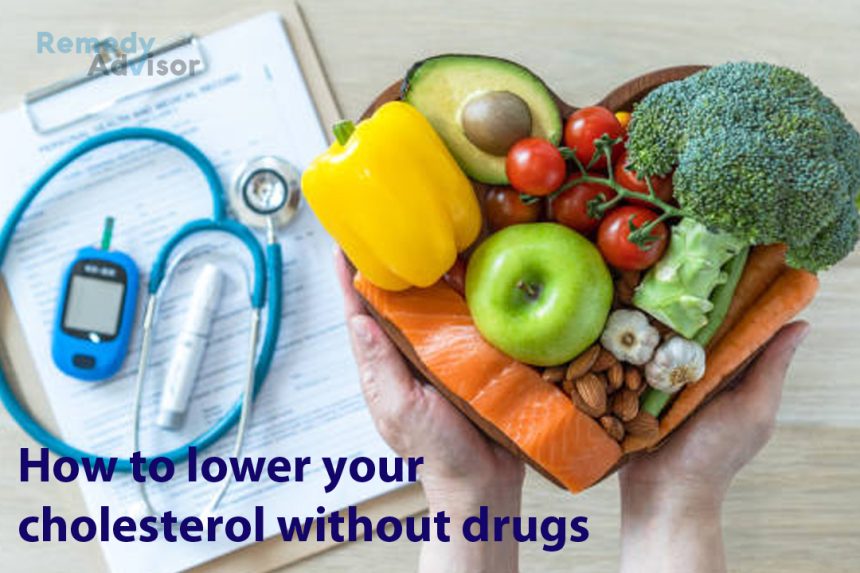Cholesterol-lowering statin drugs are among the most widely prescribed drugs in the United States.
Although statins are safe for most people, they can cause muscle pain, diarrhea or liver damage in 2% to 10 % of patients. These drugs also cost up to $1,800 for a year’s supply and must be taken for life.
That’s why I prescribe statins only when total cholesterol is about 240 mg/dL or higher or when patients already have heart disease or a high risk of developing it due to smoking, high blood pressure or other coronary risk factors.
Drug companies don’t advertise this, but many people can lower their cholesterol without taking medication.
Best approach: Eat foods with anti-cholesterol properties. Along with basic lifestyle changes, the right diet can effectively lower cholesterol to safe levels.
Bonus: If you eventually need a statin to cut cholesterol levels even more, these foods will allow you to take the lowest possible dose.
The diet cure
Even people with moderately elevated cholesterol (above 200) should be on a low-fat diet. This means limiting total fat calories to 30% or less of your total fat intake. Saturated fats, found in butter, meats and baked goods, should account for no more than 10% of total calories.
However, low-fat diets are not the perfect solution. Even with such diets, cholesterol rarely drops more than 50 points, which is not enough for some people. Also, a low-fat diet reduces levels of beneficial high-density lipoprotein (HDL) cholesterol along with the harmful low-density lipoprotein (LDL).
To compensate, everyone with high cholesterol needs to eat “functional” foods daily. These are natural and laboratory-modified foods that inhibit cholesterol absorption or promote its excretion from the body.
• Traditional functional foods
The soluble fiber in some grains, legumes and fruits dissolves and forms a gel in the intestine. This gel traps cholesterol molecules and prevents their absorption into the bloodstream. People who eat 7 grams (g) to 8 g of soluble fiber daily can lower total cholesterol 5% to 8%. Best options
• Psyllium
It’s an ancient Indian grain added to some breakfast cereals as well as commercial laxatives. In one study, as little as 3 g of psyllium daily lowered total cholesterol by 15% and LDL by 20%.
Many breakfast cereals, including Kellogg’s All-Bran Bran Buds and multigrain cereals, contain psyllium. Or you can take three tablespoons of Metamucil daily, which is equivalent to about 10 g of soluble fiber.
• Oat and rice bran
New studies show that people who eat three ounces of oat bran daily can improve the ratio of “bad” LDL to “good” HDL cholesterol by 24%.
Rice bran lowers LDL almost as much as oat bran in those who eat approximately three ounces daily.
• Fish

Two to three fish meals weekly will lower LDL and triglycerides, fats that have also been linked to heart disease.
One study of 20,000 American doctors found that one meal of salmon, tuna or other omega-3-rich fish per week reduced the risk for fatal heart attack by 52%.
Fish-oil supplements are an option for people who don’t eat fish, but they may not provide as many health benefits as fish. Typical dose: 1 g to 3 g daily.
• Designed functional foods
The trans-fats in traditional margarines raise cholesterol about as much as saturated fat does. Benecol, a cholesterol-lowering margarine, contains stanol esters, chemically modified plant extracts that lower cholesterol as effectively as some drugs.
Eating four tablespoons of Benecol (the equivalent of three pats) daily lowers LDL by up to 14%. Benecol is also available in gel tablets for people who want the convenience of supplements or don’t eat margarine.
Helpful: A low-calorie version, Benecol Light, contains approximately 50% fewer calories. It can be spread on toast, bagels, etc., but it should not be used for cooking. You can cook with regular Benecol, however.
Additional strategies
In addition to following a low-fat diet and eating functional foods, people with high cholesterol should consider
• Vitamins
Certain antioxidant vitamins reduce heart attack risk by blocking chemical changes (oxidation) that cause LDL cholesterol to stick to arterial walls and promote atherosclerosis (fatty buildup in the arteries).
- Vitamin E: Take at least 200 international units (IU) of the natural form (d-alpha-tocopherol) daily, but consult your doctor first.
- Vitamin C: Like vitamin E, it inhibits oxidation of LDL molecules. People who get the most vitamin C in their diets or from supplements are less likely to die from cardiovascular disease than those who get smaller amounts. Dosage: 500 mg, twice daily, in supplement form.
- Exercise
We used to think that only vigorous workouts would elevate levels of beneficial HDL cholesterol.
New research:
Walking or jogging at low to moderate intensity for example, walking a mile in about 14 minutes can raise HDL by as much as 9%.
Patients are commended to walk briskly for 30 minutes at least three days a week, then after two weeks to add additional exercise, such as calisthenics and weight training.
Bonus: Combining a healthful diet with aerobic exercise can lower LDL by up to 20 points.
• Weight loss
It’s not clear why, but many people who lose weight also reduce their LDL cholesterol levels. Total cholesterol typically drops by about 5% for every five to 10 pounds of weight loss.
• Niacin
High doses of this B vitamin (1.5 g to 3 g daily) can lower LDL by as much as 15% to 30% and raise HDL by 10% to 40%.
Niacin can be taken alone but is normally added if statins do not lower triglycerides or raise HDL sufficiently. But at high doses, niacin can cause side effects, such as flushing, liver problems and heart rhythm irregularities. Use it only under a doctor’s supervision.







